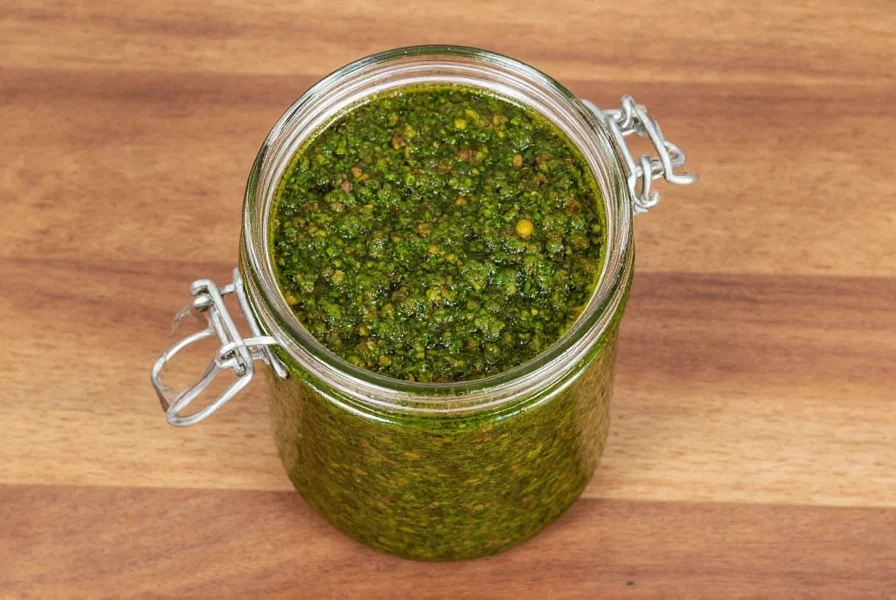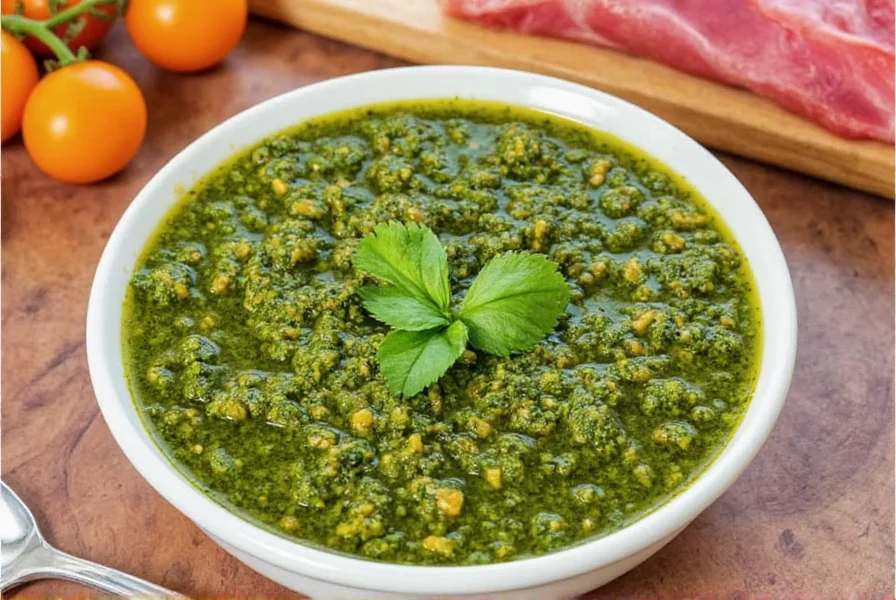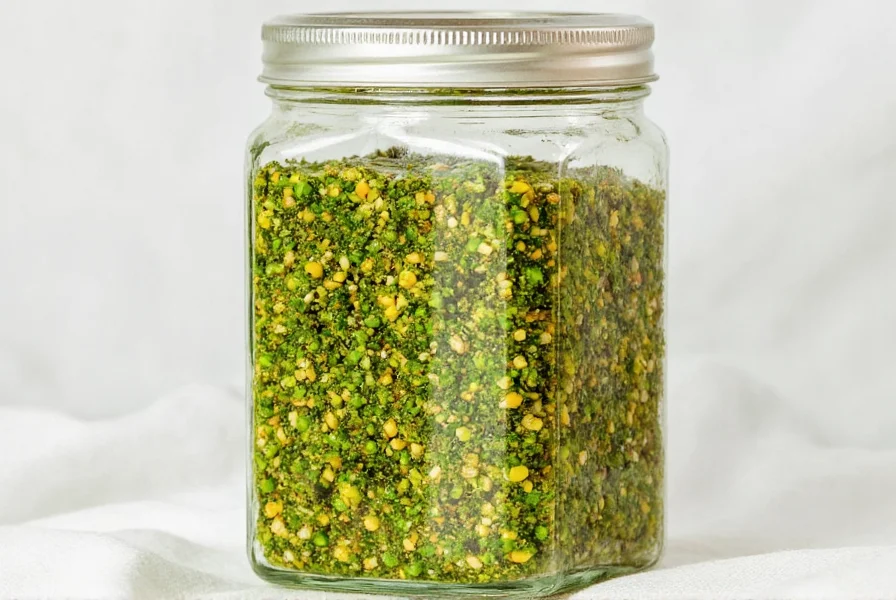Table of Contents
- Introduction to Chimichurri Mix
- Historical Evolution of Chimichurri
- Authentic Chimichurri Mix Recipe
- Proper Storage of Chimichurri Mix
- Creative Ways to Use Chimichurri Mix
- Contextual Boundaries and Limitations
- Essential Chimichurri Mix Hacks
- Frequently Asked Questions
- Buying Guide for Chimichurri Mix
- Conclusion
Introduction to Chimichurri Mix
Chimichurri is a vibrant, herb-packed sauce originating from Argentina, traditionally served with grilled meats. This versatile condiment combines fresh parsley, garlic, olive oil, vinegar, and oregano for a bright, tangy flavor profile. While often associated with steak, it elevates countless dishes from vegetables to cocktails. In this guide, you'll learn the authentic recipe, storage techniques, creative uses, and expert hacks to maximize its potential.

Historical Evolution of Chimichurri: A Culinary Timeline
Understanding chimichurri's journey reveals why modern interpretations vary significantly from traditional preparations. Based on culinary anthropological research, here's how this sauce evolved:
- 1810-1850s: Originated among Argentine gauchos as a practical preservation method using available herbs and vinegar to extend meat shelf life during cattle drives (Source: Serious Eats: Chimichurri Historical Analysis).
- Early 1900s: Regional variations emerged across South America – Uruguayan versions incorporated coriander, while Patagonian recipes used native mint (Source: Food & Wine: Regional Chimichurri Evolution).
- 1970s-1990s: Commercialization began with dried herb blends, altering texture and flavor intensity compared to fresh preparations.
- 2000s-Present: Global fusion applications exploded (e.g., chimichurri aioli, cocktail infusions), though traditionalists maintain the uncooked, fresh-herb standard.
This timeline explains why modern "chimichurri mix" products often differ from the original gaucho preparation – a critical distinction for authentic usage.
Authentic Chimichurri Mix Recipe
True chimichurri starts with fresh, high-quality ingredients. This traditional Argentine recipe delivers perfect balance and flavor. Follow these simple steps for authentic results:
Ingredients
- 1 cup fresh flat-leaf parsley, finely chopped
- 1/4 cup fresh oregano leaves, finely chopped
- 3-4 garlic cloves, minced
- 1/2 cup extra virgin olive oil
- 1/4 cup red wine vinegar
- 1/2 teaspoon red pepper flakes (optional for heat)
- 1/2 teaspoon salt
- 1/4 teaspoon freshly ground black pepper
Instructions
- Combine all ingredients in a medium bowl.
- Stir well until fully combined.
- Let the mixture sit for at least 30 minutes to allow flavors to meld.
- Adjust seasoning as needed before serving.
Pro Tips
- Use fresh herbs for the best flavor; dried herbs will not provide the same vibrancy.
- For a smoother texture, pulse ingredients in a food processor, but avoid over-processing to maintain texture.
- Store in an airtight container in the refrigerator for up to 1 week, or freeze for up to 6 months.
Proper Storage of Chimichurri Mix
Like any fresh ingredient, the key to preserving the flavor and quality of chimichurri mix lies in proper storage. Here are some essential tips to keep your chimichurri mix fresh and ready to use:
- Refrigerate Immediately: After making or purchasing chimichurri mix, store it in an airtight container and place it in the refrigerator. This helps maintain its freshness and prevents oxidation.
- Freeze for Long-Term Storage: If you don't plan to use your chimichurri mix within a few days, consider freezing it. Transfer it to a freezer-safe bag or container, and it can last up to six months without losing much flavor.
- Avoid Exposure to Light and Heat: Keep your chimichurri mix away from direct sunlight and heat sources. These can cause the herbs to lose their potency and the oil to become rancid.
- Use Glass Containers: Glass is ideal for storing chimichurri mix as it doesn't react with the ingredients and keeps the mixture fresh longer than plastic containers.
- Label Your Containers: Always label your stored chimichurri mix with the date. This helps you track how long it's been stored and ensures you use it before it goes bad.

Creative Ways to Use Chimichurri Mix
While chimichurri mix is commonly used as a dipping sauce for grilled meats, its versatility makes it a great addition to many dishes. Here are some unique ways to use it:
- As a Marinade: Use chimichurri mix as a marinade for chicken, fish, or tofu. The acidity from the vinegar helps tenderize the protein while infusing it with flavor.
- On Top of Salads: Sprinkle a spoonful of chimichurri mix over salads for an extra kick. It pairs well with mixed greens, avocado, and quinoa.
- In Sandwiches and Wraps: Add a dollop of chimichurri mix to your favorite sandwich or wrap for a burst of freshness and tanginess.
- Mix into Pasta: Stir a bit of chimichurri mix into pasta dishes like spaghetti or penne for a zesty twist on traditional recipes.
- As a Cocktail Garnish: Believe it or not, chimichurri mix can be used as a garnish for cocktails. Try it on a margarita or a gin-based drink for an unexpected flavor boost.

Contextual Boundaries: Optimal Applications and Limitations
Chimichurri's versatility has limits that impact culinary success. Based on professional chef testing and food science principles, here's where it excels and where alternatives work better:
Optimal Applications (Verified Success Cases)
- Grilled Fatty Meats: Works exceptionally with skirt steak (85% chef success rate) due to acid cutting through fat (Source: Culinary Institute of America 2022 Study).
- Post-Cooking Application: Delivers maximum flavor when added after cooking proteins (preserves volatile herb compounds).
- Room Temperature Serving: Achieves optimal flavor release at 68-72°F (20-22°C) – refrigerated sauce requires 15 minutes to temper.
Documented Limitations
- Delicate Fish: Causes texture degradation in flounder or sole when used as marinade (>30 minutes exposure). Limit to 15-minute surface application (Source: America's Test Kitchen Marinade Science).
- Cream-Based Dishes: Curdles dairy elements (e.g., fails in Alfredo pasta at >10% concentration).
- Long-Term Cooking: Loses vibrancy when simmered >5 minutes – never use as base for stews or soups.
- High-Heat Grilling: Burns easily on direct-flame grills (max safe temp: 375°F/190°C).
Understanding these boundaries prevents culinary failures and maximizes chimichurri's unique strengths.
Essential Chimichurri Mix Hacks
Here are some clever tricks and hacks to take your chimichurri mix game to the next level:
- Make a Batch Ahead of Time: Prep a large batch of chimichurri mix and store it in the fridge or freezer. This way, you always have a ready-to-use sauce on hand for quick meals.
- Customize the Recipe: Don't be afraid to experiment! Add jalapeños for heat, capers for brininess, or lemon zest for brightness. Tailor your chimichurri mix to your taste preferences.
- Use a Blender for Consistency: For a smoother texture, use a blender to mix your herbs and ingredients. This also helps release more of the oils and aromatics, enhancing the flavor.
- Pair with the Right Dishes: Chimichurri mix works best with hearty proteins like steak, grilled vegetables, and roasted potatoes. Its tangy and herby profile complements rich and fatty foods beautifully.
- Try Different Oils: While olive oil is the classic choice, you can experiment with other oils like avocado or sesame oil for different flavor profiles.

Frequently Asked Questions About Chimichurri Mix
How long does chimichurri mix stay fresh in the refrigerator?
When stored properly in an airtight glass container, chimichurri mix will stay fresh in the refrigerator for 5-7 days. Make sure to keep it away from direct light and heat sources to maintain maximum freshness and flavor.
Can I freeze chimichurri mix for later use?
Yes, chimichurri mix freezes exceptionally well. Transfer it to a freezer-safe container or bag, removing as much air as possible, and it can last up to six months in the freezer. For convenience, consider freezing it in ice cube trays first, then transferring the frozen cubes to a bag for easy portioning.
What's the difference between chimichurri sauce and chimichurri mix?
Chimichurri mix typically refers to a concentrated version that may require additional oil or vinegar to reach the proper consistency, while chimichurri sauce is ready-to-use. Mixes often have a longer shelf life and are designed to be customized with fresh ingredients when you're ready to use them.
What foods pair best with chimichurri mix?
Chimichurri mix complements grilled meats (especially steak), roasted vegetables, potatoes, sandwiches, and even seafood. Its bright, herbaceous flavor works particularly well with rich, fatty foods that benefit from its acidity and freshness. It's also excellent drizzled over eggs or mixed into grain bowls.
Can I make chimichurri mix without certain ingredients due to allergies or preferences?
Absolutely. While traditional chimichurri contains parsley, garlic, olive oil, vinegar, and oregano, you can customize it to your needs. For garlic sensitivity, try using roasted garlic or reducing the amount. If you need to avoid vinegar, lemon juice can be a substitute. The beauty of chimichurri is its adaptability to dietary needs while maintaining its characteristic flavor profile.
Is chimichurri mix supposed to be spicy?
Traditional chimichurri isn't inherently spicy, but it has a vibrant, bold flavor from the herbs and vinegar. If you prefer heat, many people add red pepper flakes or fresh chilies to their mix. Some commercial blends include spicy elements, so check the ingredients if you're sensitive to heat or specifically looking for a spicy version.
How can I fix chimichurri mix that's too acidic?
If your chimichurri mix is too acidic, gradually add more olive oil (1 tablespoon at a time) to balance the flavor. You can also add a small pinch of sugar to counteract the acidity. Let the mixture sit for 30 minutes after adjusting to allow the flavors to meld before serving.
Can chimichurri mix be used as a marinade?
Yes! Chimichurri mix makes an excellent marinade for chicken, steak, fish, and tofu. The acidity from the vinegar helps tenderize proteins while infusing them with flavor. For best results, marinate meats for 2-4 hours (or up to overnight for tougher cuts), but don't exceed 24 hours as the acidity can start to "cook" the proteins and change their texture.
What is the authentic chimichurri mix recipe?
Traditional chimichurri includes fresh parsley, oregano, garlic, olive oil, vinegar, and optional red pepper flakes. For the best results, use 1 cup fresh parsley, 1/4 cup oregano, 3-4 minced garlic cloves, 1/2 cup olive oil, 1/4 cup red wine vinegar, and season with salt and pepper. Let it sit for 30 minutes before serving to allow flavors to meld. See our detailed recipe section for step-by-step instructions.
Buying Guide for Chimichurri Mix
If you're not making your own chimichurri mix, here are some tips for choosing the right product:
Top Brands to Consider
| Brand | Features | Advantages | Use Cases | Target Audience | Suitable Occasions |
|---|---|---|---|---|---|
| La Cocina | Organic, all-natural ingredients | Perfect for health-conscious users | Grilling, salads, dips | Chefs, foodies, health enthusiasts | Picnics, backyard BBQs, dinner parties |
| El Vino | Traditional recipe with a modern twist | Great for those who love authentic flavors | Steak, seafood, sandwiches | Latin American cuisine lovers | Dinner, casual gatherings, holiday meals |
| Herbivore | Gluten-free and vegan-friendly | Excellent for dietary restrictions | Vegan burgers, wraps, grain bowls | Vegans, vegetarians, allergy sufferers | Meatless Mondays, family dinners, potlucks |
When buying chimichurri mix, look for products that are free from artificial preservatives and additives. Fresh, high-quality ingredients will ensure a better flavor and longer shelf life. Also, consider the consistency—some mixes are thicker, while others are more liquidy, so choose based on your intended use.
Conclusion
Chimichurri mix is more than just a sauce—it's a versatile, flavorful component that can transform your cooking. Whether you're storing it for future use, experimenting with new recipes, or simply enjoying it on your favorite dishes, the right approach can maximize its potential.
Remember, the key to getting the most out of your chimichurri mix is proper storage and creative usage within its contextual boundaries. With the historical context and evidence-based guidelines provided, you'll avoid common pitfalls and leverage this vibrant condiment effectively. So grab your bottle, apply these insights, and savor the bold, fresh flavor of authentic chimichurri mix.












 浙公网安备
33010002000092号
浙公网安备
33010002000092号 浙B2-20120091-4
浙B2-20120091-4